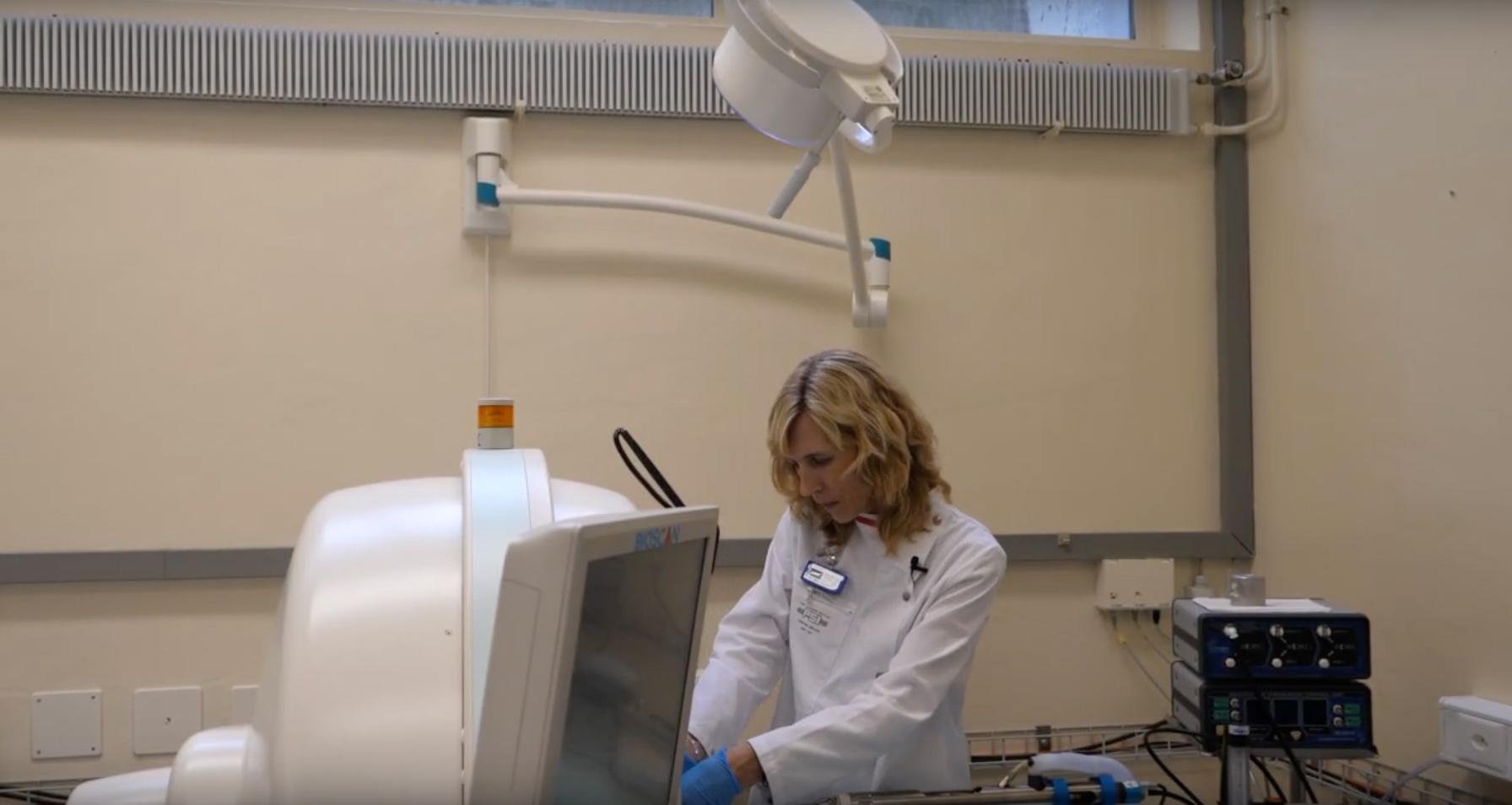A new tool for non-invasive imaging of ACE2, the SARS-CoV-2 entry receptor

Possible changes in the enzyme ACE2 after SARS-CoV-2 infection have hardly been investigated so far. Cristina Müller's research team is developing an imaging tool to support this research.
The ACE2 enzyme which plays an important role in the cardiovascular system, serves as an entry portal for SARS-CoV-2. It could be that such an infection alters the enzyme, which could have a previously unknown influence on the cardiovascular system. Up to now, this possibility has hardly been explored so far, as there has been no suitable way to make ACE2 visible from the outside.
The research team led by Cristina Müller at the Paul Scherrer Institute is working on a new way to make ACE2 visible by developing a radiotracer that binds to ACE2. This makes it possible to visualise the enzyme from the outside using the imaging technique positron emission tomography (PET). The radiotracers developed so far were first tested in vitro and in a further step studied with mice to investigate their distribution in a living organism.
The first radiotracers successfully bind to the enzyme ACE2, but also accumulate in other body regions. The structure of the radiotracer must therefore be further optimised to improve its distribution in the body. This non-invasive imaging tool could make it possible to better study ACE2 in the future.
This is not only useful for research on SARS-CoV-2, but can also be of great benefit for other research projects around the cardiovascular system.
- Publication: “A tool for nuclear imaging of the SARS-CoV-2 entry receptor: molecular model and preclinical development of ACE2-selective radiopeptides”
- Project description
